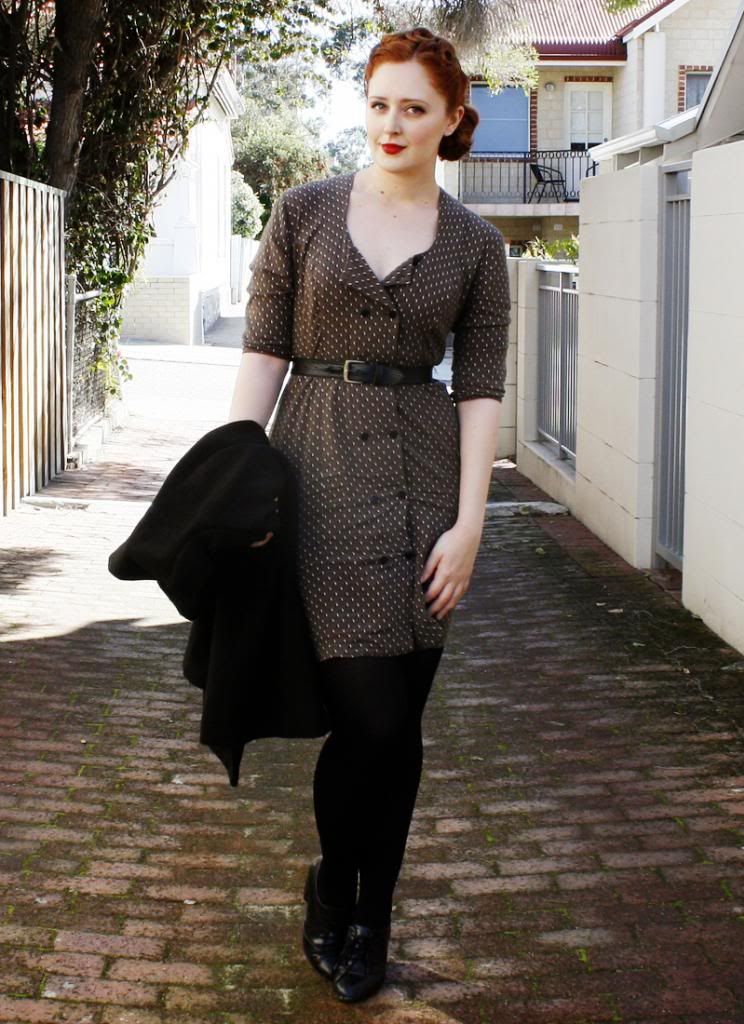Wet-Felted Cloche Hat
Tutorial
As cooler weather rolls in, I am always looking for more warm hats. My affinity for red pea coats (10 years, going strong!) means that I have to choose carefully lest I clash or look like a Christmas tree. Though I love knitting, I like a little variety in my hats. With only a few hours of work, you can take a pile of roving and turn it into a cute cloche hat. Plus, you can go ahead and call yourself a milliner afterwards, and that's pretty great. Some experience with wet-felting is definitely helpful.
Materials:
-Wool roving
-A hat form or a balloon
-Nylon stocking
-Bubble wrap or sushi mats
-Ivory soap (or another gentle liquid soap)
-Hot water
-Felting needles (if needed for fixing up)
If using a balloon, inflate to about 1/2 inch larger than the diameter of your head. Determine how long you want your hat to be and mark it with masking tape on the balloon or the hat form. Apply a thin layer of liquid soap on your form, it will act as an adhesive and help with the felting process.
Begin applying wool as follows:
First, apply a layer of wool vertically. Gently stretch out wool in lines from about an inch below the tape line over the top of the form to an inch below the tape. Apply vertical lines until the form is covered. Next, apply a layer of wool horizontally. Wrap the wool in rings around the previous later from bottom to top. Repeat these two steps until you have 5-6 layers.
After the form is completely covered, carefully pull a nylon stocking over the top. Cut off any excess stocking and tie in a knot (or cut the stocking above the foot, then you will have the toe seam on top). Put your hat form somewhere that you can get wet. I used a shallow plastic box.
Squirt some more liquid soap on top of the stocking. Using water as hot as you can stand it (or, cover your hands in rubber gloves if sensitive), pour a small amount onto the wool. Pat with your hands to ensure the water is everywhere. Gently rub your hat with your hands, in small circles. As you rub, you will feel the wool begin to felt. When the hat starts to feel firm, you can rub much more forcefully. Add more soap and water as needed.
When it seems like nothing you are doing makes a difference, it is time to full the felt. Remove the stocking and form. Rinse your hat, alternating hot and cold water. Wring it out and place it on your fulling mat (bubble wrap or sushi mat). Add more soap and hot water. Now, you are going to be very aggressive with your felting. Rub it all around your mat or roll it up inside, then roll back and forth. Repeat, turning the felt every few minutes, until your hat feels very well-felted. Rinse out and place back on form to dry. You may have to stretch it to make it fit, but get it on there!
After your hat has dried, trim it to your desired length. Working from the inside, use felting needles to fill in thin spots. You may also want to use your felting needle to smooth out the edge where excess was trimmed off.
In my opinion, a cloche looks naked without something on the side. I used pre-folded quilt edging to make a ribbon and bow on mine. I preferred this to actual ribbon because it was not so shiny, which matched the matte of the hat well. I sewed the ribbon around the brim then added a bow. For a tutorial for this style of bow, follow my finishing for these hair bows. You could also add a big flower or a feather instead if it suits your fancy.
And then, you have a hat! So easy and so warm. Hooray for millinery!











































